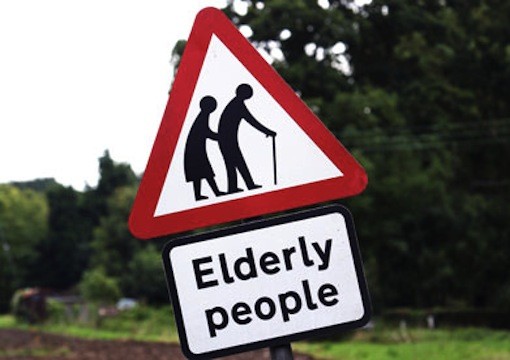It is hard to imagine that when it comes to technology and seniors we should only be talking to people age 65-75. It truth the new old age starts at 75 . . . maybe barely.
This article was first published at Aging In Place Technology Watch which is published by Laurie Orlov Accenture exaggerates wildly — but what should we think? Rant on. Accenture, seeing a void of ‘information’ to use to gain new clients, put out an obfuscating headline in a press release last week that precipitates pause. More than pause — the need for a willing suspension of disbelief: Tech-Savvy Seniors Seek Digital Tools to Manage their Health. To generate that headline, they surveyed 9015 adults internationally, including the US — and, get this, of those, they included 200 aged 65+ Medicare recipients. Of course, 2 percent of the survey responders is what led some PR genius at Accenture to grab attention with that headline. So what’s a senior, anyway? Accenture was pitching global consulting services, naturally, and promoting the report that sat behind the headline — intended for companies filled with young marketers trying to penetrate the mystique of consumers. But when Accenture foists a fact-like assertion, doesn’t this make you want to know — so what IS the technology adoption rate of the real seniors in the US? In September, Pew’s researchers sent this along about those aged 76-80: 8.3% have a smart phone, 60.8 have a regular feature phone and 30.9% have neither type. Odds are that the 30.9% population is not online and thus won’t be seeking a digital tool to manage their health.
What’s a senior — let’s just get over this age 65 cut-off date. As I have previously noted, I am not talking about Medicare eligibility — I am talking about demographic analysis (this means you, too, Pew!). I would argue that we are approaching the day when senior is well beyond age 65, in fact when it is really 75+. Longevity makes it so — know that if you live to 65, on average, there are another 20 years ahead. And one in four 65-year-olds will make it to age 90. We also know that marketers want to market to people that can buy/use their products. And some have reported that the wealth of the oldest age groups has remained stable in comparison to the youngest. We also know that demographic sampling by age provides a backdrop for identifying segments of prospective buyers of products, services, homes, assisted living, etc. Good luck, however, finding much in the way of useful information about the tech (or other) needs of the 75+ population, except for a tidbit here and there — in April, 2012, Pew noted that internet adoption for those aged 76+ was at 34% and broadband adoption was at 21%.
So where do you go to find out about these folks? What percentage of the 75+ population is college-educated, owns their own home, has a cell phone or smart phone, goes online (that means you at SSA, who are phasing out paper statements!), owns a newer television, has a certain level of income or accumulated assets? Or for that matter, has a specific health condition that might need some mitigation or support? Has anyone aggregated the total populations aged 75+ who have macular degeneration, hearing loss, arthritis or dementia? All of these have big implications for providers of services and products, including technology services and products — those potentially influenced by their adult children and grandchildren. As you know, it can be quite interesting, not to say appalling, to see the gap between a provided service and the actual age of today’s customers. An unhappy example: soft, plush fabric-covered furnishings in a dementia care unit where the half of the residents who are not in wheelchairs are incontinent and/or unstable when standing up. When the building was configured by its corporate developers, bet they didn’t think too much about the age the prospective customer might be in 3-5 years. Had they wanted to consider it, however, there very few demographic surveys and projections about future assisted living residents that could have helped.
Google this — when was the last survey about technology use among the age 75+ demographic? Sadly, it might have been the Linkage Technology Survey that was completed 2 years ago this November. Besides a dribble from Pew, organizations that should provide an age breakdown of their constituents — simply as a public service — offer very little. AARP uses Pew. The CDC doesn’t survey the 75+. CMS tracks providers and claims (see Fraud update) — but not whether the recipients are online. And the Social Security Administration — good grief! Ask Google for “Percentage Social Security recipients not online.” Note that Google (or Bing or Yahoo) retrieves the monthly statistical snapshot about SSA’s constituent population. That snapshot is available online, but tells nothing about whether their constituents are online to read it. Ah, but there is hope — if you are online but have trouble with a keyboard and a mouse — SSA refers the online viewer to Dragon Naturally Speaking! Hmmmph. As for the real seniors who are aged 75+, technologically speaking — no one seems to think it is their job to survey them. About anything. Rant off.









Thanks for mentioning us Laurie and as you know…that is ALL we do! And as you mentioned, it is critical to break down the 65+ population. Companies who buy into the fact that the 65+ is one big happy group is sadly mistaken and missing huge opportunities. Looking at this group in smaller segments not only opens new doors for many companies, it also helps these groups continue and enhance a thriving life style. THANK YOU for bringing this to the front burner once again.
I’m starting a business “ROSEY RETIREMENT RESOURCES” focused on Life Long Learning” especially for Seniors who are house bound, but have their mental faculties. My partner, female, and I would visit clients at least weekly in their homes with educational DVD’s, laptops, iPads, reading material, music, et al. Any thoughts you can offer will be appreciated! Rollie Henry, Portland, OR, 971-201-7564 This will not be free! Comments on pricing?
Hello, every time i used to check website posts here in the early hours in the
dawn, since i like to gain knowledge of more and more.